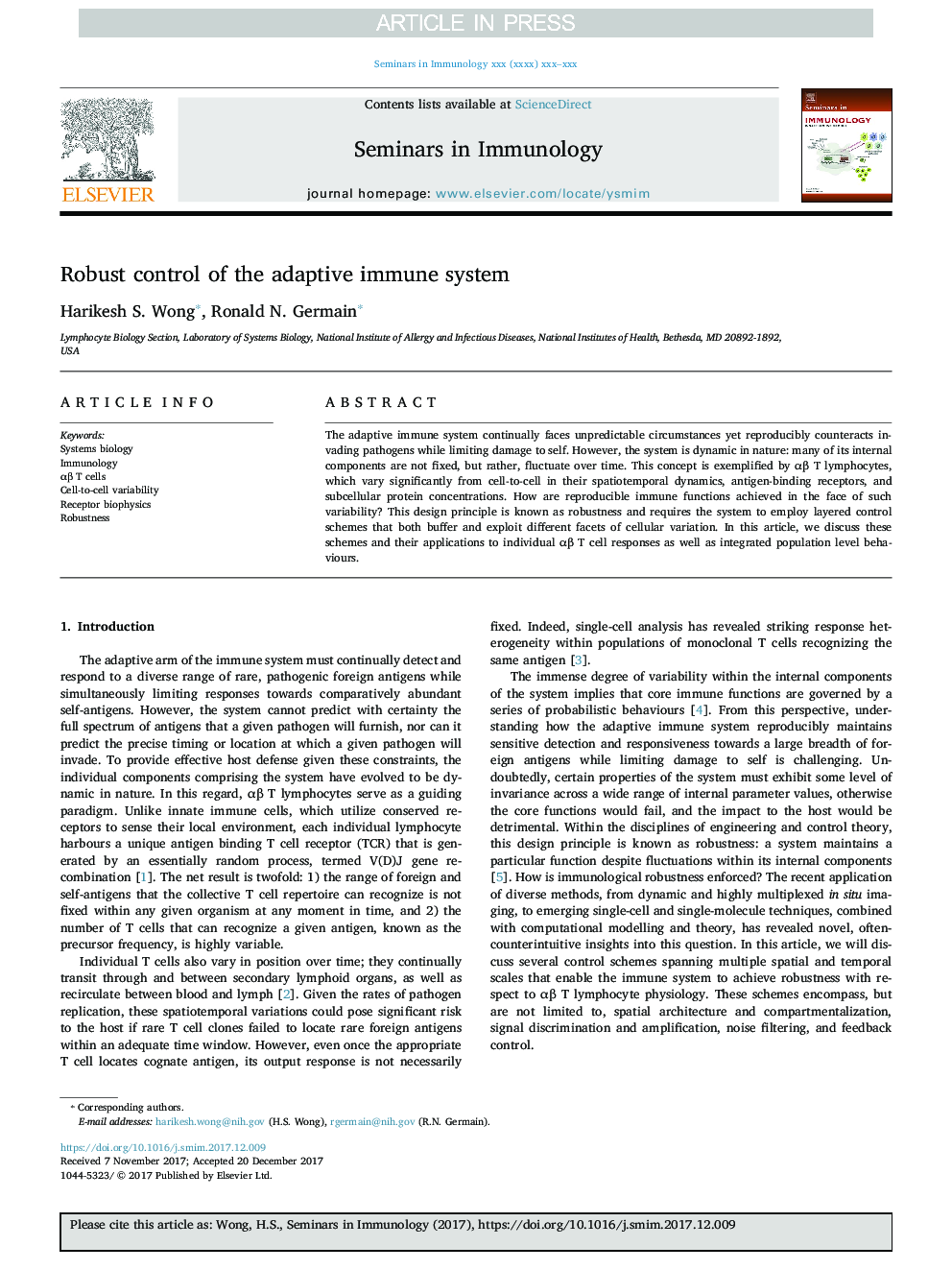| Article ID | Journal | Published Year | Pages | File Type |
|---|---|---|---|---|
| 8743684 | Seminars in Immunology | 2018 | 11 Pages |
Abstract
The adaptive immune system continually faces unpredictable circumstances yet reproducibly counteracts invading pathogens while limiting damage to self. However, the system is dynamic in nature: many of its internal components are not fixed, but rather, fluctuate over time. This concept is exemplified by αβ T lymphocytes, which vary significantly from cell-to-cell in their spatiotemporal dynamics, antigen-binding receptors, and subcellular protein concentrations. How are reproducible immune functions achieved in the face of such variability? This design principle is known as robustness and requires the system to employ layered control schemes that both buffer and exploit different facets of cellular variation. In this article, we discuss these schemes and their applications to individual αβ T cell responses as well as integrated population level behaviours.
Related Topics
Life Sciences
Immunology and Microbiology
Immunology
Authors
Harikesh S. Wong, Ronald N. Germain,
